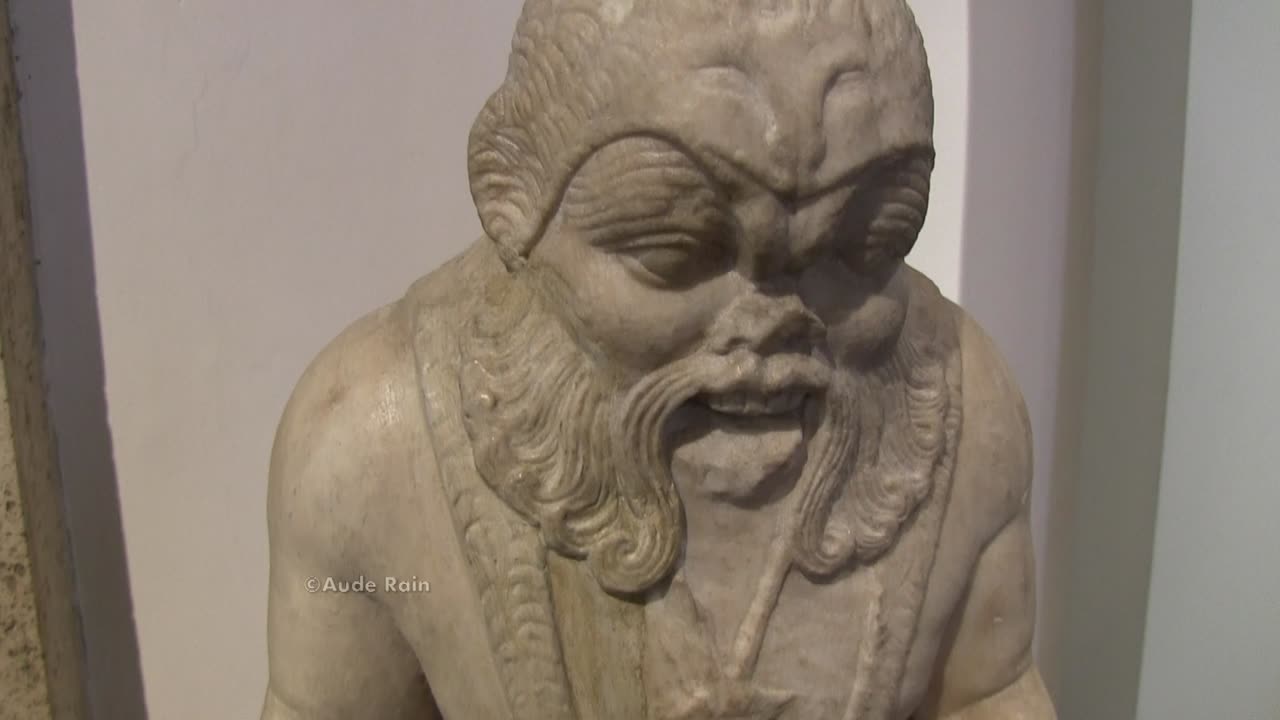Premium Only Content

Bes - Egyptian God
"The origins of Bes remain obscure. Perhaps he is a composite of up to 10 separate deities. From an art historical point of view, he is certainly a curiosity: unlike most Egyptian gods, who usually appear in profile, Bes is brazen and frontal, as well as comical. Some scholars suggest that he emerged in sub-Saharan Africa. It is possible that he began life as a lion or cat rearing on its hind paws.
Ultimately Bes was celebrated because he was never official or exclusive. Mischievous and irreverent (it was said that he could make babies laugh by pulling funny faces), he was resolutely down-to-earth – a god for commoners rather than royalty. Performers tattooed their bodies with images of Bes because of his associations with music and dancing, while prostitutes may have placed tattoos of Bes near their genitalia, in order to stave off sexually transmitted diseases.
By the end of the second millennium BC, Bes had proliferated across the Mediterranean world. Even local, non-Egyptian craftsmen produced objects decorated with his image. Early in the first millennium, the Phoenicians became big fans of Bes, as the Romans would too. Bes occasionally appears dressed as a Roman legionnaire. His rampant popularity even survived the advent of Christianity." https://www.bbc.com/culture/article/20130619-how-the-devil-got-his-looks
"Bes, a minor god of ancient Egypt, represented as a dwarf with large head, goggle eyes, protruding tongue, bowlegs, bushy tail, and usually a crown of feathers. The name Bes is now used to designate a group of deities of similar appearance with a wide variety of ancient names. The god’s figure was that of a grotesque mountebank and was intended to inspire joy or drive away pain and sorrow, his hideousness being perhaps supposed to scare away evil spirits. He was portrayed on mirrors, ointment vases, and other personal articles. He was associated with music and with childbirth and was represented in the “birth houses” devoted to the cult of the child god. Contrary to the usual rule of representation, Bes was commonly shown full-faced rather than in profile, since full-faced figures were marginal to the normal, ordered world." (https://www.britannica.com/topic/Bes )
-
 1:34:00
1:34:00
Nick Freitas
5 hours agoCan Elon Musk’s America Party Actually Win?
31.6K14 -
 2:37:04
2:37:04
megimu32
3 hours agoOTS: The Matrix Was About WHAT?! Trans Allegory, Cancel Culture & Comedic Chaos
11.2K7 -
 LIVE
LIVE
VapinGamers
3 hours ago $0.01 earnedDestiny 2 - Just Cause and Goodies, Let's Talk New Stuff - !rumbot !music
334 watching -
![Batman Arkham Knight [6K Reshade Mods] Hardest Difficulty ⋆ Western Retread](https://1a-1791.com/video/fww1/4a/s8/1/M/p/x/0/Mpx0y.0kob.1-small-Batman-Arkham-Knight-6K-Res.jpg) LIVE
LIVE
FusedAegisTV
8 hours agoBatman Arkham Knight [6K Reshade Mods] Hardest Difficulty ⋆ Western Retread
57 watching -
 31:35
31:35
Solar Groove Muzic
1 day ago $0.01 earnedDeep House Mix 2025 | Deep House, Vocal House, Nu Disco, Chillout
8.99K2 -
 1:21:31
1:21:31
Glenn Greenwald
6 hours agoTrump Mocks Concerns About Epstein; Trump Continues Biden's Policy of Arming Ukraine; Trump and Lula Exchange Barbs Over Brazil | SYSTEM UPDATE #483
117K119 -
 54:26
54:26
Edge of Wonder
9 hours agoTexas Floods: Boots on the Ground with Shawn Livingston
26.1K8 -
 1:38:45
1:38:45
LIVE WITH CHRIS'WORLD
4 hours agoLIVE WITH CHRIS'WORLD - DO YOU FEEL LIED TO?
27.3K6 -
 1:06:31
1:06:31
BonginoReport
7 hours agoIs Trump Trying To Sweep Epstein Under The Rug? - Nightly Scroll w/ Hayley Caronia (Ep.85)
164K222 -
 1:19:40
1:19:40
Kim Iversen
8 hours agoDid Cloud Seeding Cause The Texas Floods?
128K101